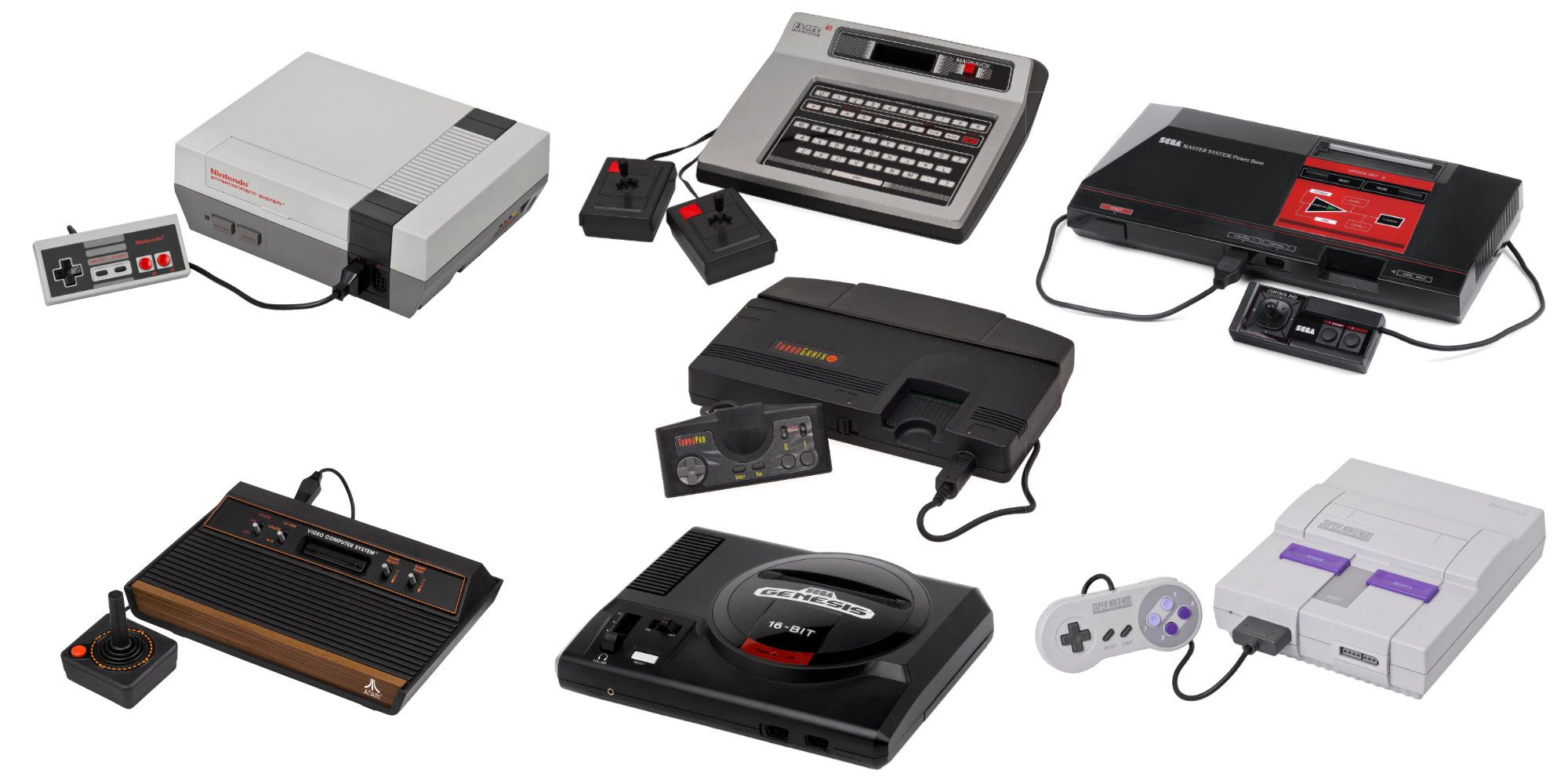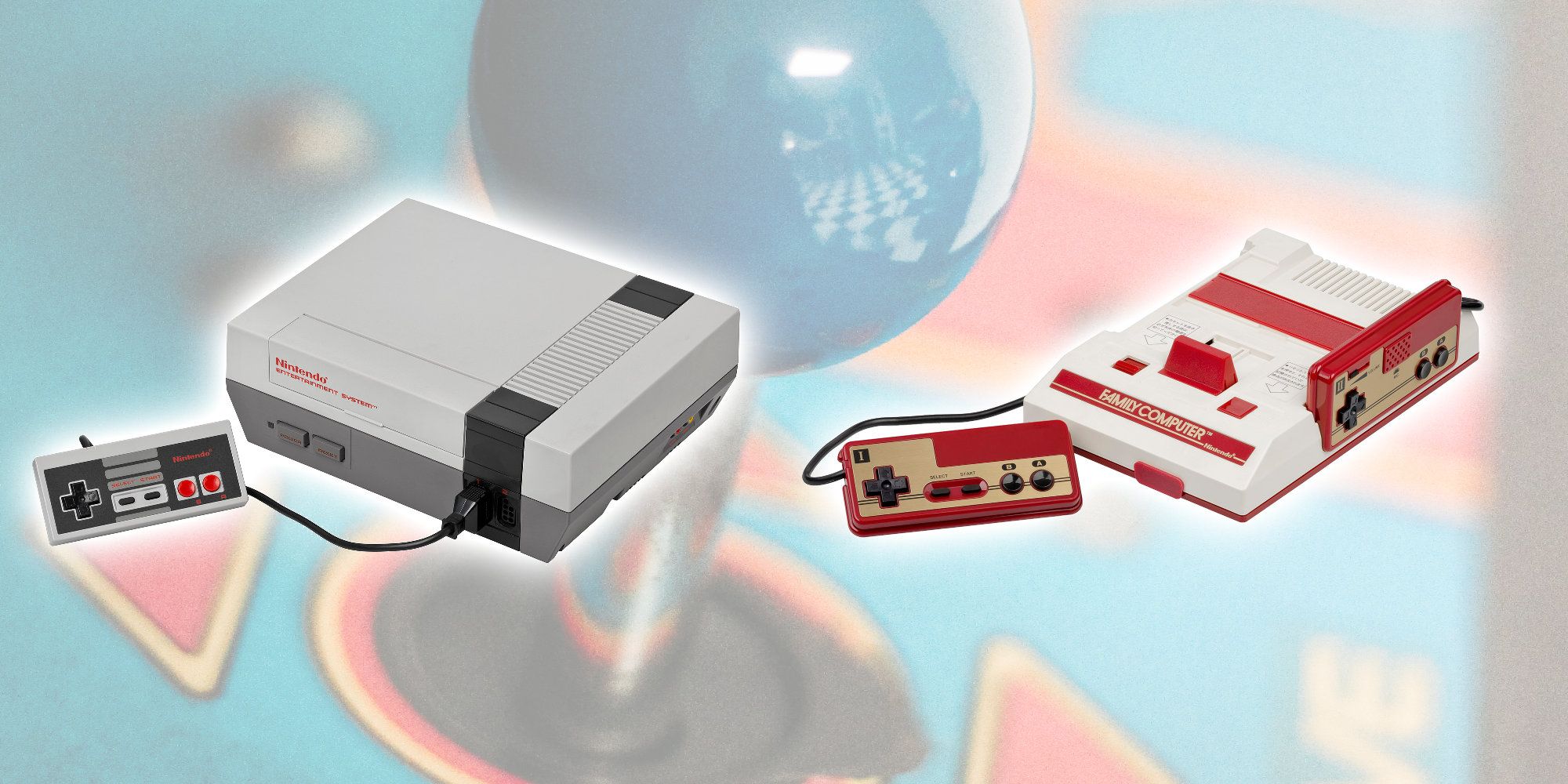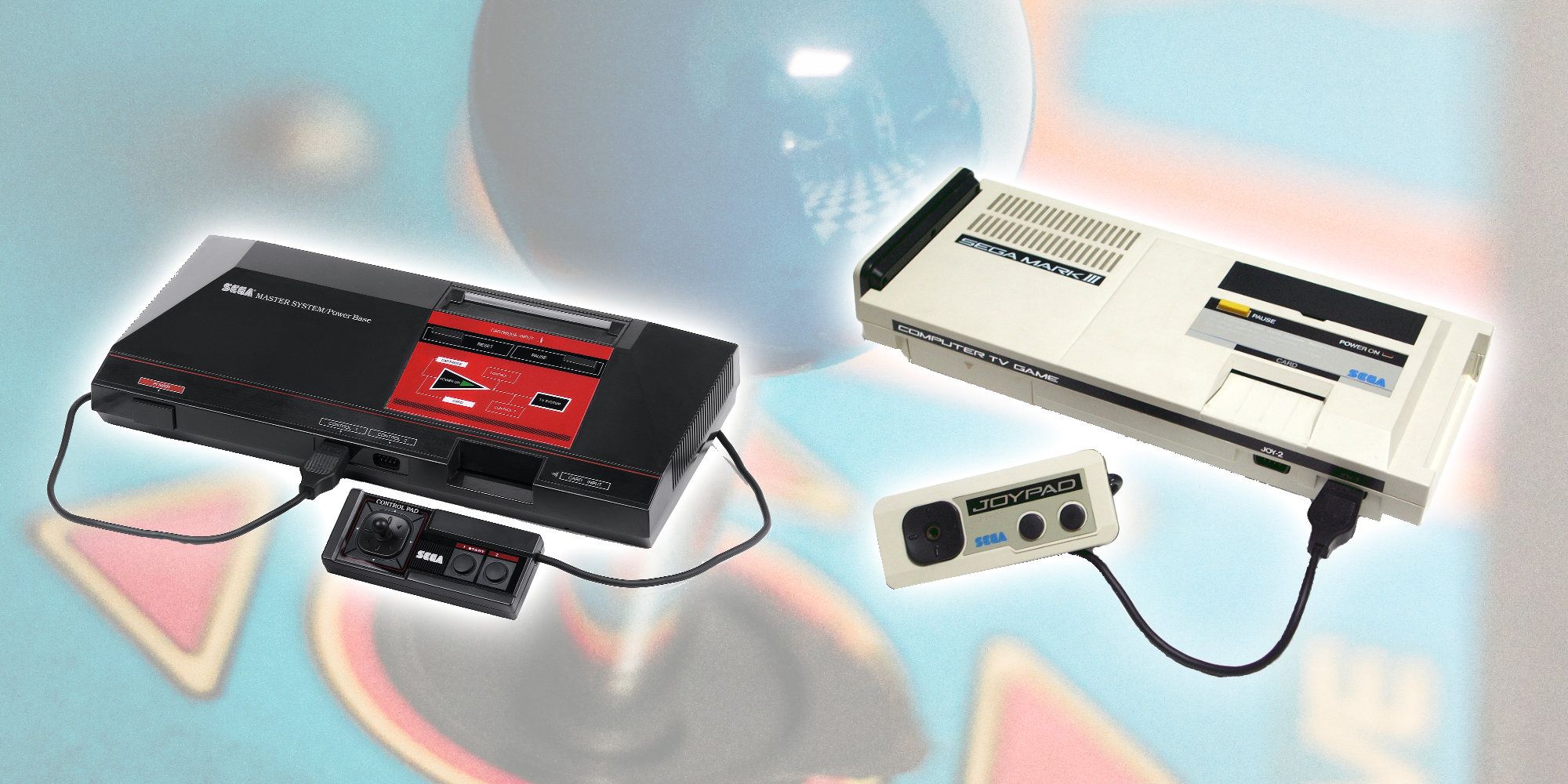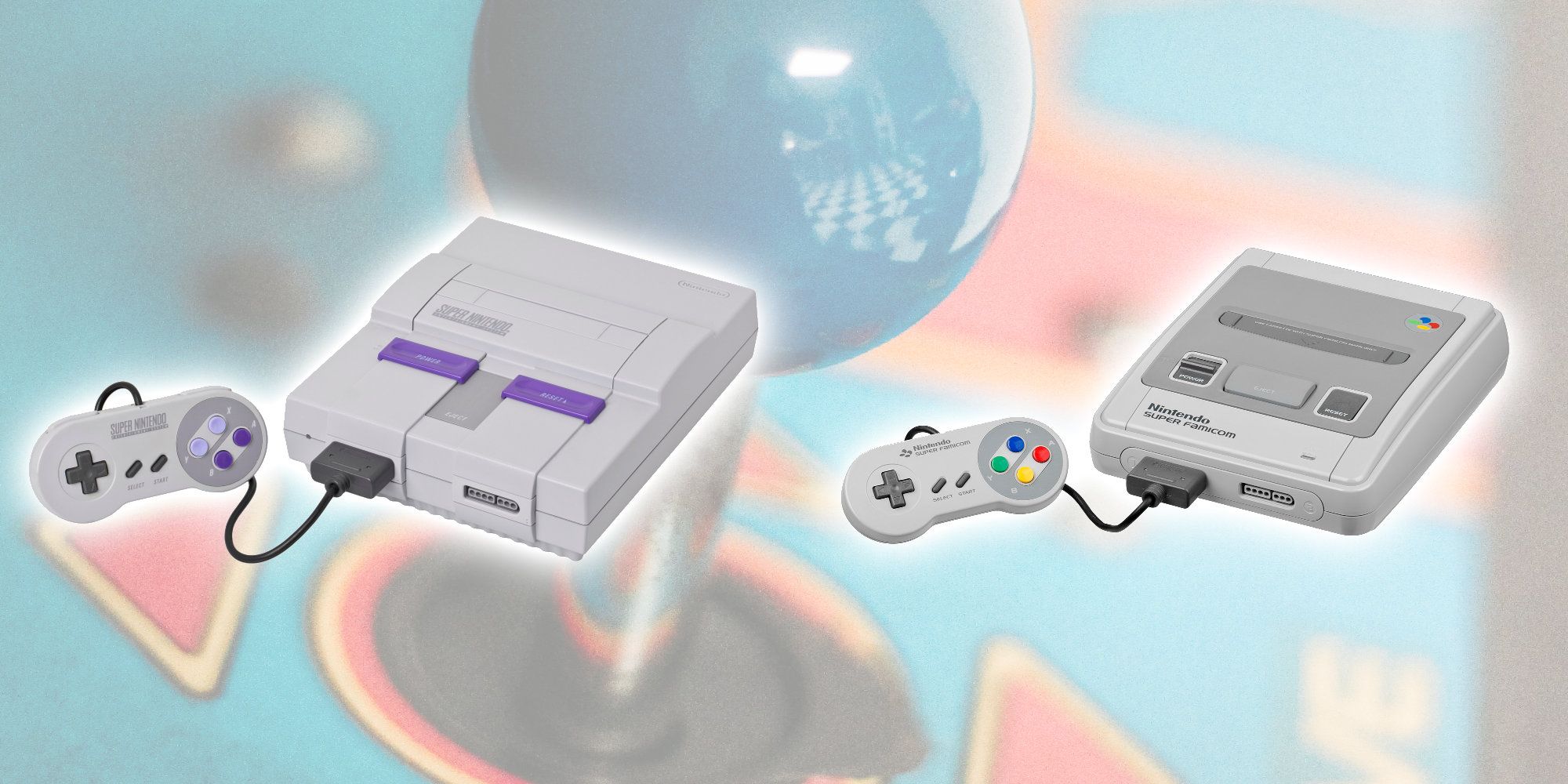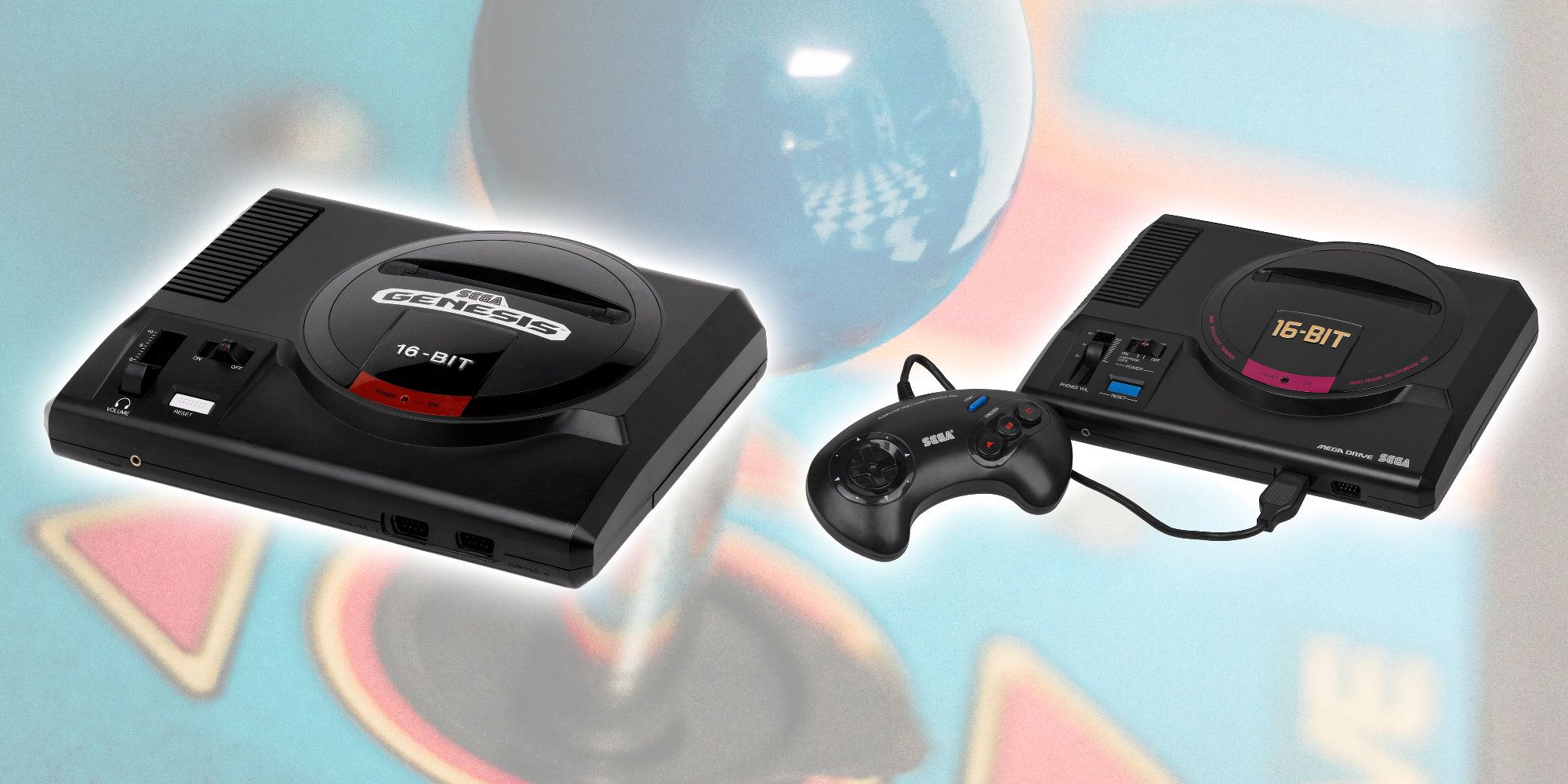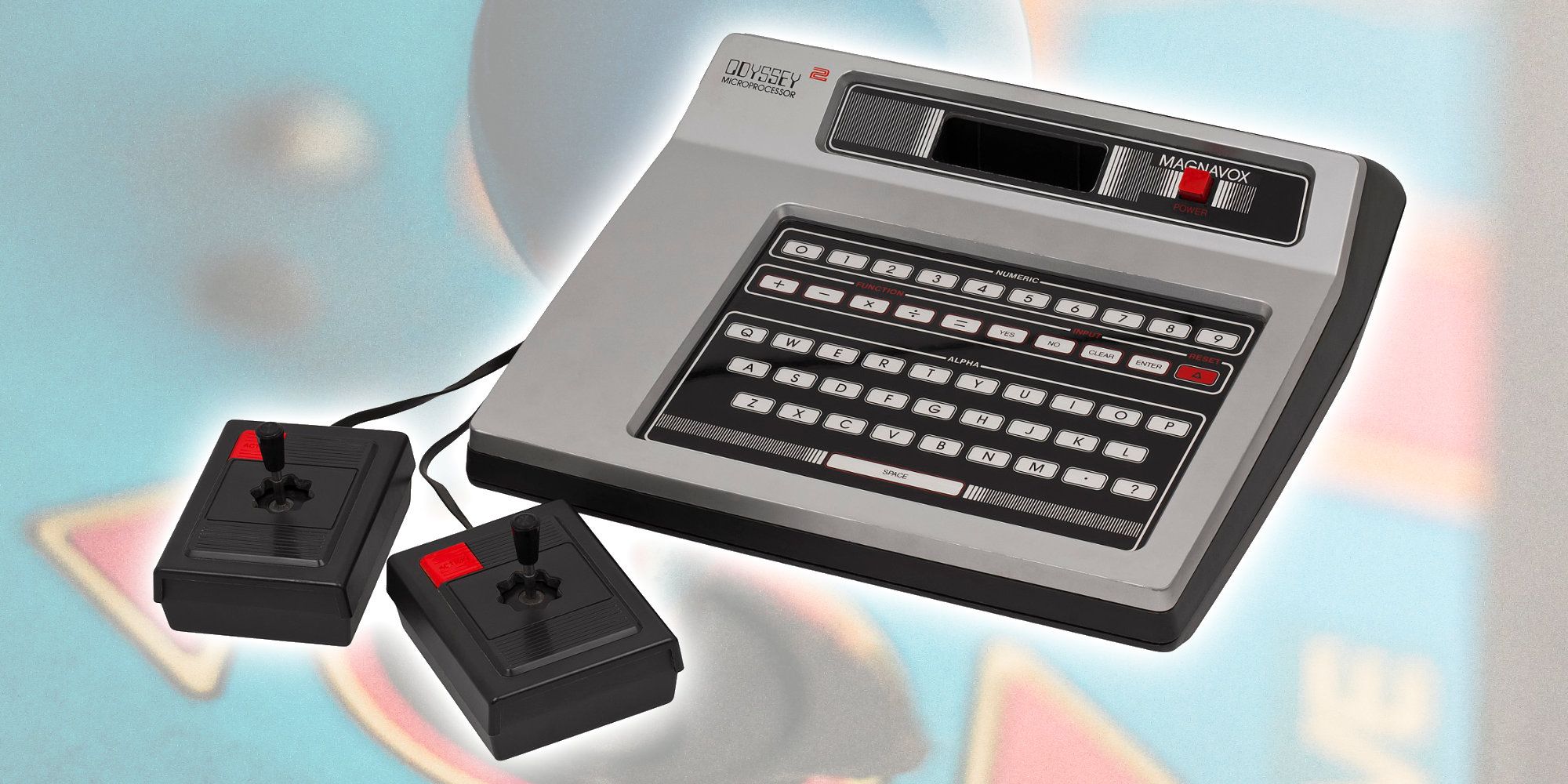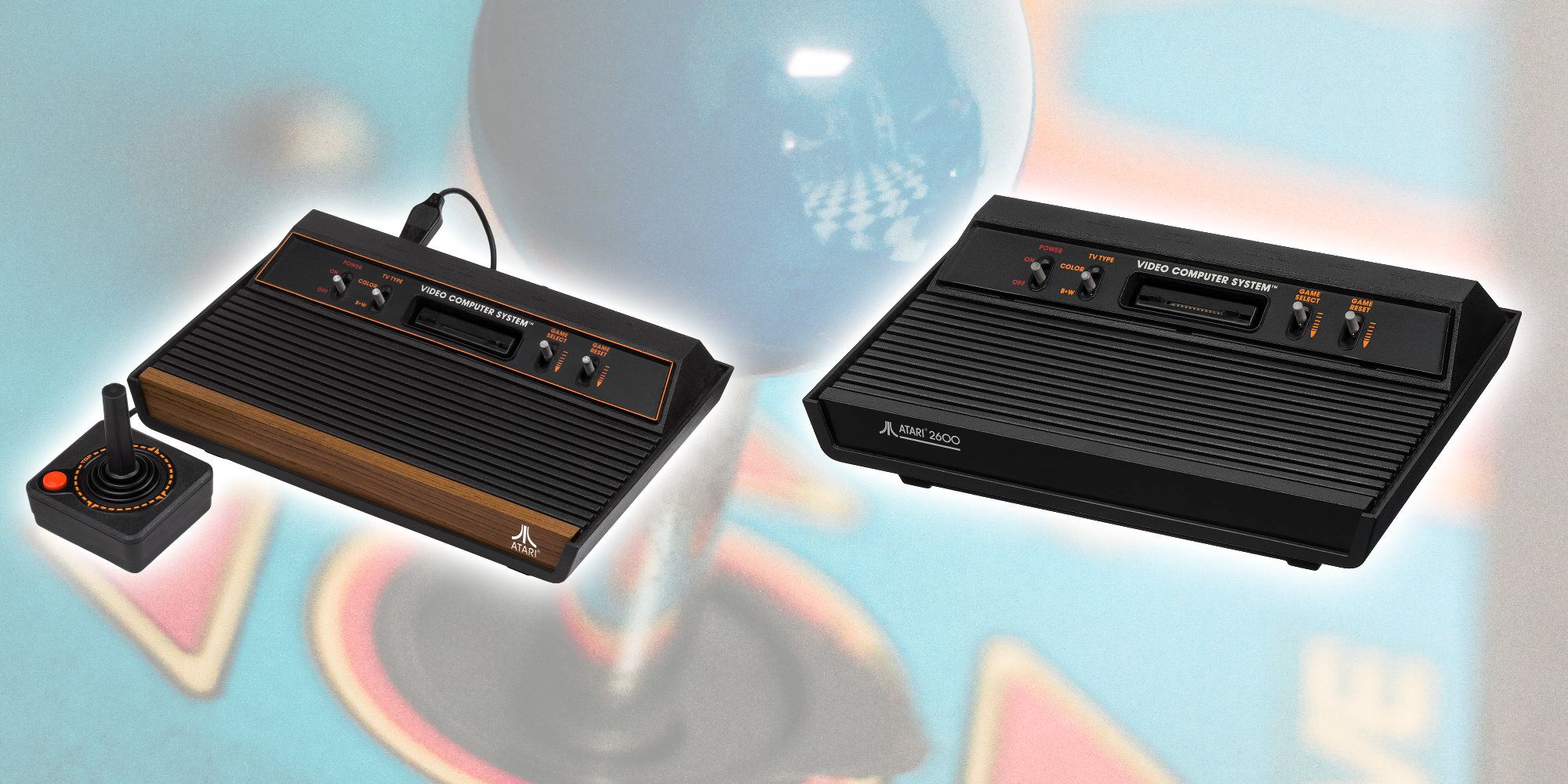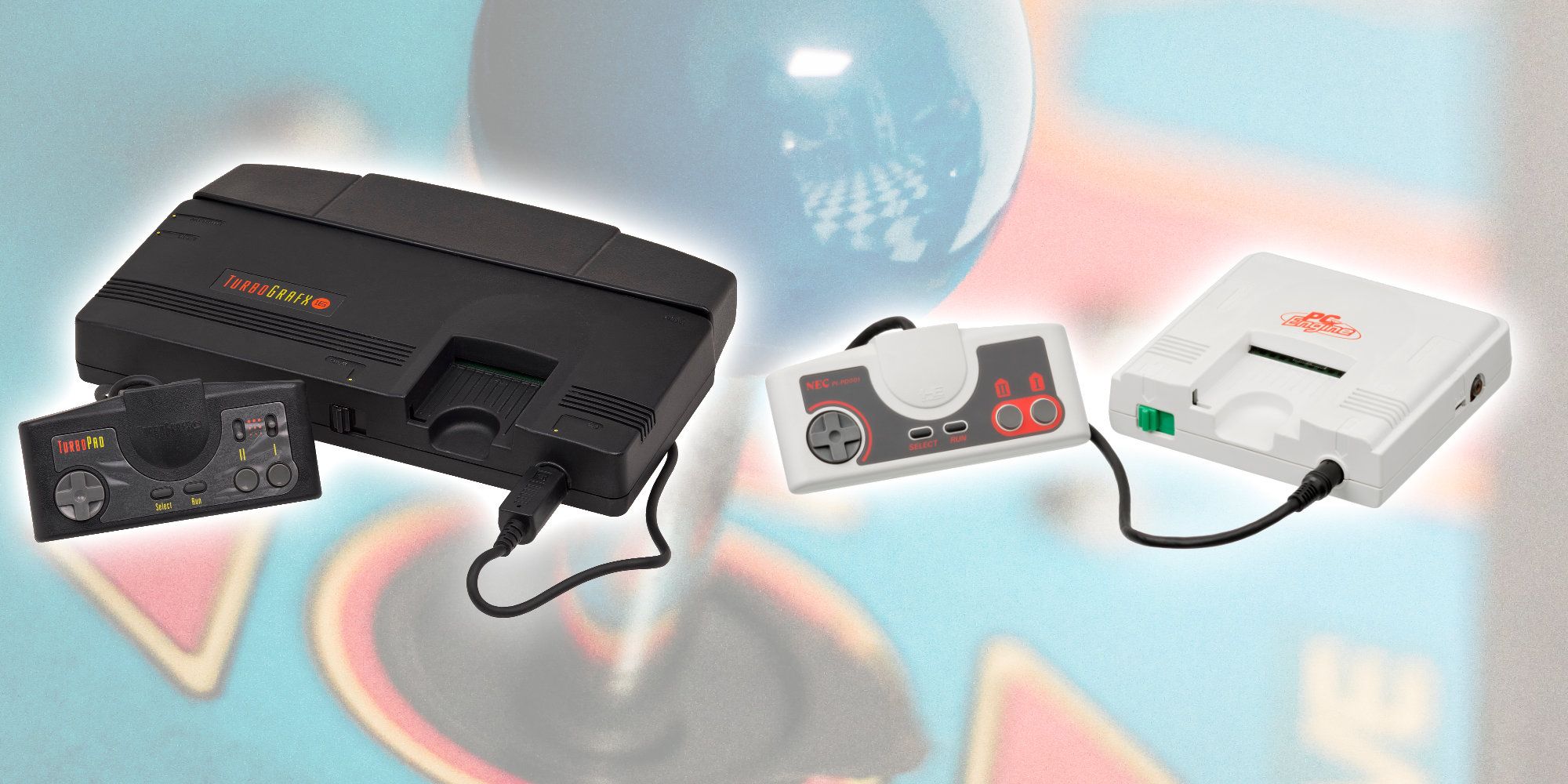Xbox, PlayStation, and Nintendo are the three major manufacturers of consoles today and are household names thanks to careful marketing. There is parity across the different territories with unified branding; the PlayStation 5 is the PlayStation 5 wherever you go.
The early days of home video gaming were different, with console names, and even sometimes the company, changing based on the country they sold in. This led to many of the classic consoles taking on distinct identities for a variety of reasons. Join us as we explore some retro consoles that are known by more than one name.
7 Nintendo Entertainment System / NES (1985)
AKA Nintendo Family Computer or Nintendo Famicom
The home console market in the US was still reeling from the video game crash of 1983, a turbulent time in gaming history. The giant Atari had fallen, and the market, saturated with an overabundance of hardware choice and poor quality titles, crashed hard. Despite this, Nintendo wanted to conquer the US market, but they feared the Famicom looked too much like a toy. They went back to the drawing board and in 1985 pinned all their hopes on a VCR style re-design and name rebrand; the Nintendo Entertainment System (NES) was born.
Nintendo released The Famicom in 1985. It had a compact toy-like design; a white outer shell with red accents and two storage slots room for the controllers. The simplistic design did well in Japan, outselling rivals the year of its launch and amassing 69 million units over its lifespan. For the US launch, the top loading cartridge slot disappeared, with Nintendo opting instead for a complex, push down, spring-based, front loading mechanism that allowed a cartridge to lock into place. This emulated pushing a videotape into a VCR and differentiated it from being a game console. Nintendo decided upon a rectangular, two-tone gray case, making the unit look at home on media centers below televisions across US. They used the same design for the NES European release.
6 Sega Master System (1986)
AKA Sega Mark III
The Sega Master System hit US shores in 1986 and competed against the popular NES. It struggled to get a foothold, selling a pitiful 125,000 consoles by the end of 1986, compared to Nintendo’s 1.1 million.
In the same way that Nintendo renamed the Famicom to NES, Sega of America rebranded an existing console. The Mark III was Sega’s third outing, building upon their previous offerings, the SG-1000 and SG-1000 II. It had a hardware boost, with the team building an in-house chip based upon their System 2 arcade system. This made the machine more powerful than the Famicom, but it struggled to find success because of a lack of strong titles. Not only was the name changed, Sega of America utilized a futuristic design in black for the hardware. They used white for the external packaging, contrasting and avoiding confusion against the black designs that Nintendo used.
5 Super Nintendo Entertainment System (1991)
AKA Super Famicom, Super ComBoy
The console wars between Nintendo and Sega were about to intensify, with next-gen 16-bit consoles inbound from both companies. Sega won the race with the Sega Genesis launching in the US in 1989, but despite this advantage, it could not maintain a sizable market share once Nintendo’s SNES launched.
In the same way they renamed the Famicom, the Nintendo Entertainment System (NES), the Super Famicom became the Super Nintendo Entertainment System (SNES). They redesigned the case for the Americas release, a chunky redesign of the case and cartridge. The rest of the world kept the sleek, elegant feel of the Japanese model, but sported the Super Nintendo Entertainment System moniker.
4 Sega Genesis (1990)
AKA Sega Mega Drive
The Sega Genesis released in 1990 and was a re-badge of the Japanese Mega Drive launched the previous year. It had a head start on the next-gen console wars and quickly built market share in the North American markets, fighting at first against Nintendo’s dominance with the previous generation NES. It would take Nintendo another year to release their next gen offering, but by then, the Genesis had built a substantial game library. A thorn in Nintendo’s side. The console wars raged on, with neither Sega nor Nintendo able to achieve market dominance.
Like its predecessor, Sega based the Genesis’ hardware upon their own arcade technology; this time the System 16 Arcade Boards. The naming swap also applied to some peripherals and upgrades, with the Mega CD becoming Sega CD. Sega extended the lifespan of the console by releasing two key upgrades, the Sega CD and 32X, with the latter allowing an element of 32-bit gaming.
The Genesis was Sega’s biggest console hit and received a redesign towards the end. This allowed Sega to take advantage of newer and cheaper parts that allowed a compact design and reduced manufacturing cost. They also released two portable versions of the console. The Nomad featured a built-in screen and was a considerable upgrade over the Game Gear. The Genesis CDX, a combined Genesis and Sega CD without a screen, used a revamped version of the hardware used for in-flight gaming. Sega left the console wars, following lack luster sales of the Saturn and the Dreamcast.
3 Magnavox Odyssey 2 (1978)
AKA Philips Videopac G7000, Philips Odyssey, Odyssey2
Magnavox released the original Odyssey console in 1972. It was the first home console and allowed games to be played using a cartridge. By 1975, it had sold over 350,000 units. Demand was still high for the console, but unable to raise the retail price in line with increased manufacturing, production ceased with Magnavox releasing a cut-down version that could only play the games built in to the unit as its replacement.
Fast-forward a few years to 1978. Now under ownership of European company Philips, Magnavox released the Odyssey 2. It had a higher specification, offering colour graphics, but it was still underpowered compared to the more popular Atari VCS. The Odyssey 2 had the cartridge port reinstated, leading to the release of a variety of games. However, it had limited 3rd party support in the US, receiving the first non-Magnavox title in 1983. The bulk of 3rd party development took place in Europe.
Philips took on releasing the console outside the US. It became the Videopac G7000 in Europe and Philips Odyssey in Brazil, but it failed to gain traction in Japan. Brazil was the most popular market, where it sold over 1 million units and spawned nationwide tournaments. They discontinued the console in 1984, having sold over 2 million consoles worldwide.
2 Atari 2600 (1978)
AKA Atari Video Computer System, VCS
The Atari 2600 was not the first cartridge based console, but it was the system that captured American hearts and opened up gaming to the masses. Released in 1977 as the Atari Video Computer System (VCS), it featured a black plastic case with accents in a wood grain finish. In 1982, they re-branded it as the Atari 2600 and it received a redesign, affectionately known as the Darth Vader console because of its all black plastic design.
Despite early success, Atari struggled to maintain their market share. The US had become flooded with too many home consoles and lackluster software. Even Atari floundered as their movie tie-in E.T. flopped. Pundits attribute this to its poor playability and the title has earned “worst game ever” in the hearts and minds of gamers the world over. The failures at Atari led to the urban legend that they tried to hide this by destroying and burying 800,000 cartridges in a New Mexico landfill. Despite Atari’s continual denials to this, Joseph Lewandowski rediscovered the long-lost disposal site based on his personal recollection, eyewitness testimony and a swath of photographs.
1 TurboGrafx-16 (1987)
AKA PC Engine
The original PC Engine launched in 1987 and became an instant hit in Japan, outselling Nintendo’s Famicom that same year. The console was a joint venture between game developer HudsonSoft and hardware vendor NEC Home Entertainment. They advertised the PC Engine as a 16-bit home console, but this referred to the graphics capability rather than the overall system. But don’t let this distract you from its ability. Thanks to some careful wizardry, the PC Engine was a very capable beast and sold well in Japan. The US launch, however, didn’t go as planned. Renamed to TurboGrafx, it faced tough competition against the Sega Genesis that had debuted just two weeks earlier on US shores. Sega won out and would not see a worthy competitor until Nintendo’s SNES.
A new upgraded version of the PC Engine hit shelves in Japan, in 1989 and was supposed to be NEC’s next-gen offering. They rushed the console to market implementing only a handful of the intended updates. It didn't sell, and they only released six games for the console before pulling the plug less than a year later.

